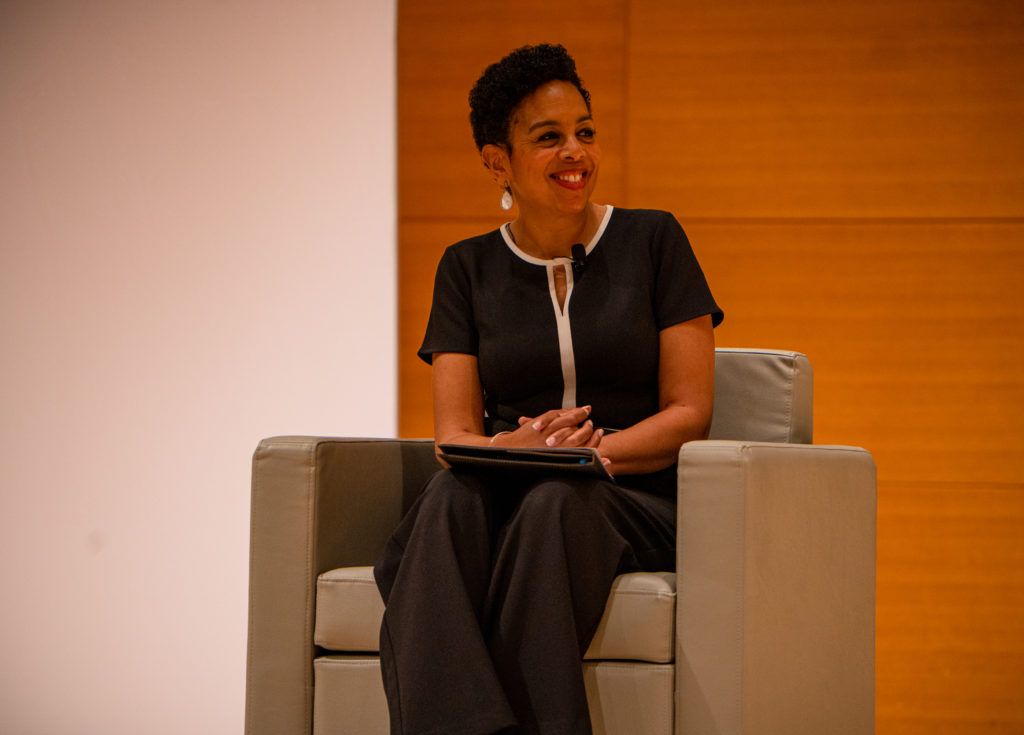Inside the Cultural Shift at a Legendary Company


How does a 111-year-old technology company survive in the modern age? According to Obed Louissaint, SVP of transformation and culture at IBM, the answer lies in driving a growth mindset and culture shift within the organization by breaking traditional modes of talent acquisition.
Leading a cultural transformation at such a massive organization requires more than simply posting mantras on a wall or kicking off meetings with a catchy phrase.
“As you are defining what your culture is, you can easily erode the narrative by who you appoint into the job,” he said in a fireside chat at From Day One’s May conference in Brooklyn. “The people you put in leadership roles tells more about what the culture is of the organization.”
The Inception of Change
Illustrating the desire to transform culture at IBM, Louissaint cited a business problem: there was a shortage of talent for the numerous cybersecurity roles the company was hiring for, yet an abundance of individuals available in the labor force.
The company realized that more than 90% of the job descriptions posted on its Careers page required a bachelor’s degree, in a nation where more than 62% of people over 25 didn’t have one. This led hiring managers to re-evaluate hiring practices and consider what true requirements were necessary for the job.
“We realized there were real-life experiences that were more important than the degree. So we had to decode what was under the degree that we were hiding from, and determining what real skills were needed,” said Louissaint. “This rethinking has led to an increase in motivated and curious new hires, higher retention rates, and a more inclusive workforce.”
He pointed to the airline hiring practices as an example of an industry successfully embracing this approach, having removed degree requirements for pilot roles.
“People panic a little bit when they hear that, but when you’re in a flight, are you more interested in somebody who has experience–or degrees?” he said, adding that finding talent among veterans was a positive shift of focusing on skills over degrees.
Adopting a Change Mindset with Limited Resources
Moderator Sharon Epperson, the senior personal finance correspondent at CNBC, pointed out how a company like IBM had numerous resources at its disposal in order to enact such a shift in hiring practices. How can companies with limited resources do the same?

One method is by re-examining job descriptions and thinking through what the true success profiles of jobs could be. Another critical step is to train managers and talent-acquisition teams to look for specific skillsets over conventional skills and be more thoughtful in their selection, Louissaint said. “We’ve been screening out individuals way too easily and not looking at the skills necessary to get the job done.”
Though IBM is a technological behemoth with the ability to use artificial intelligence as a supplement for hiring, human managers are still the ones who make the final call on a candidate. “Technology should be used to ensure candidates are diverse, and to be a good aid to a recruiter to surface inequities so the team has full visibility,” said Louissaint, who leads the areas of leadership, learning, diversity and inclusion, and transformation for the company.
In addition, culture transformation requires leaders who are responsible for the clarity of the outcome, as well as an engaged and contributing employee base. To cultivate a conversation around company values, IBM hosted a Slack conference inviting all 250,000 employees worldwide, utilizing feedback from the discussion to reconfirm its values.
Beyond that, management must ensure that employees are able to adopt recession-proof skills. Louissaint said that companies have to build the platforms and tools to equip people to learn, as well as creating a culture of learning, which he says IBM achieves by gamifying the process.
What HR Leaders Can Do Now
Ultimately, professionals who are determined to cultivate culture change must develop a mindset that focuses on skills versus degrees in order to create a more diverse workplace, such as reviewing existing hiring methods and considering recruits from nontraditional places of learning such as coding boot camps and community colleges.
“It’s not enough for us to look different if we sound the same,” Louissaint said. “By focusing on inclusion and not just diversity alone, it will be the power of what drives us towards innovation and building a real growth culture.”
Tania Rahman is a native New Yorker who works at the intersection of digital marketing and tech. She enjoys writing both news stories and fiction, hot chocolate on cold days, reading, live music, and learning new things.
The From Day One Newsletter is a monthly roundup of articles, features, and editorials on innovative ways for companies to forge stronger relationships with their employees, customers, and communities.